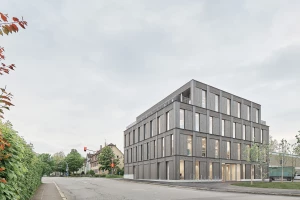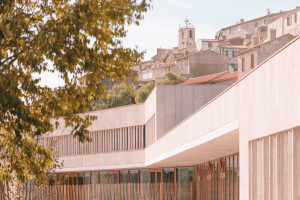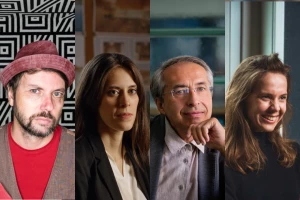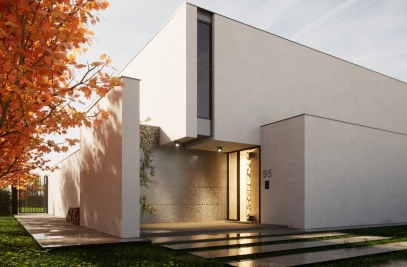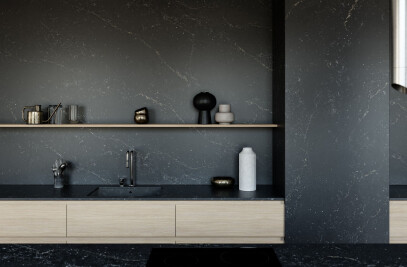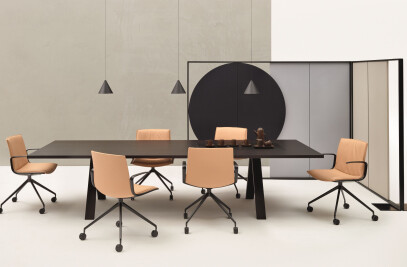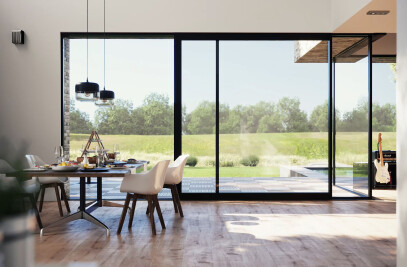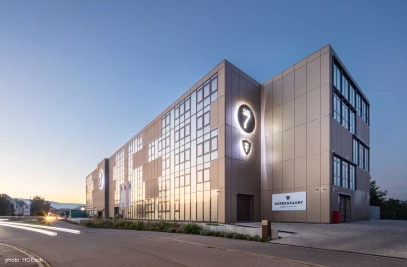L'École Samuel Paty is part of an urban renewal project that has been transforming the Devèze district of Béziers in southwestern France since 2004, where large complexes built in the 1970s are incrementally being replaced by smaller multi-family housing projects, individual private residences and public facilities that include a town hall annex, a community center and sports spaces.
The new school has been designed by Paris-based Ateliers O-S Architectes in association with regional studio NAS Architecture. The project includes four buildings totaling 3,800 square meters, in addition to 4,500 square meters of exterior landscaped spaces. The program consists of a school with 15 classrooms, a medical care center and administrative offices for the local inspections department. Opened in 2023, it is the result of a competition run by the local municipality in 2019.
The single-level new school building is organized concentrically to form an enclosure yielding a pair of courtyards protected from seaside winds and the noise of the adjacent boulevard. Two additional linear buildings house programs not affiliated with the school; these are simple autonomous volumes separated by vegetated exterior areas.
According to the architects the project was designed to offer both massiveness and porosity. The school is like a simple extrusion that wraps the courtyard. It consists of an asymmetrically pitched roof atop a circulation corridor made of concrete abutting a classroom made of metal and wood. The project is characterized by this hybrid structure: it appears massive and mineral from the street while porous and more finely tuned from the schoolyard. The four buildings are unified by the physical and visual weight of their sanded concrete shells above which float thin roofs of sheet metal.
The interior schoolyard is landscaped with playgrounds, learning gardens and relaxation areas. It is designed as a clean topography that meets the building with terraced play and educational spaces. Preserving the existing trees on the site was an important organizational element to the project. The entrance to the school and its forecourt are located at the junction of a collection of sycamore trees to the west and pine trees to the north. Here the greenery extends beneath the large roof which is pierced by three large, circular openings that provide light to an interior garden. Designed entirely in concrete, this welcoming entry space guides children from the forecourt to the halls of the school.
The courtyard and school building have two programmatic parts: a preschool and a primary school. The building features dedicated reception spaces for each. The principal's office is planned at the junction of the two reception halls and offers a field of vision across the internal schoolyard. Its position is strategic to allow contact with families and ensure safety within the school complex. Administrative and support spaces for children with additional needs are organized around this entry point.
The plan promotes a clear and easy organization for children and staff. The bright concrete corridor winds around the school to form a sort of protective shell shielding the classrooms within. It functions like an internal street to distribute users from the reception areas to learning spaces, offering views of both the city and the courtyards through the classrooms. Designed as a semi-outdoor space the corridor is neither heated nor insulated. Acoustic and thermal insulation and mechanical systems are located within the second interior facade that separates the concrete corridor from the classrooms. The classrooms have been designed in direct connection with the schoolyard with large operable windows.
The sloped topography of the site places the two schools at different elevations, despite the fact that they form a continuous single-story loop. At the junction between the higher level and the lower level is, to the west, the reception areas and, to the east, a multi-purpose room. This latter common space is accessible from the two courtyards and placed on the lower level of the preschool to promote easy movement for the youngest students. Its direct entry to both playgrounds allows for interior activities to spill outside.
Other common areas which include the library and canteen are located in an autonomous and smaller linear building accessible through a shared outdoor space with an educational garden. By separating the volume from the classrooms it retains acoustic isolation, and permits deliveries to the canteen that do not disturb educational activities.
A car park for the school staff is shared with the two buildings whose programs are independent from the school. The medical building is located such that it has direct access from the adjacent pedestrian street and an entrance separate from the school. And located at the eastern end of the plot, the inspections building is a two-story structure housing a reception area, secretarial offices and a meeting room on the ground floor, with offices and a tea room above.














